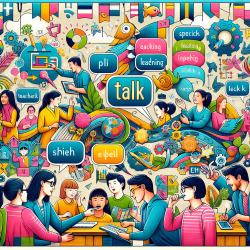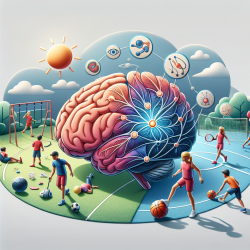Understanding the Impact of Gender Stereotypes on STEM Education
In the pursuit of fostering a new generation of innovators and thinkers, understanding the barriers faced by children, particularly girls, in STEM (Science, Technology, Engineering, and Mathematics) is crucial. The research article "The Place of Gender Stereotypes in the Network of Cognitive Abilities, Self-Perceived Ability and Intrinsic Value of School in School Children Depending on Sex and Preferences in STEM" provides valuable insights into how gender stereotypes affect children's cognitive abilities and their interest in STEM fields.
Key Findings from the Research
The study examined 546 Russian school children aged 12 to 17, revealing significant differences in cognitive abilities and self-perceptions between those interested in STEM and those who are not. It was found that:
- STEM students generally possess higher cognitive abilities and intrinsic motivation towards math and science.
- Boys scored higher in science, math, and overall academic self-efficacy, while girls displayed higher levels of gender stereotypes related to STEM and lower self-efficacy in math.
- Gender stereotypes are more strongly linked to cognitive abilities in the non-STEM group, particularly affecting girls' perceptions and career choices.
Implications for Practitioners
For speech-language pathologists and educators, these findings underscore the importance of addressing gender stereotypes in educational settings. Here are some strategies to consider:
- Promote Gender-Neutral Learning Environments: Encourage activities and discussions that challenge traditional gender roles and promote inclusivity in STEM subjects.
- Enhance Self-Efficacy: Implement programs that build confidence in girls' abilities in math and science, such as mentorship programs and hands-on STEM activities.
- Incorporate Network Analysis: Use network analysis to understand the relationships between cognitive abilities, self-perceptions, and stereotypes, tailoring interventions to address specific needs.
Encouraging Further Research
While this study provides a comprehensive look at the role of gender stereotypes in STEM education, further research is needed to explore interventions that can effectively reduce these stereotypes and support all students in pursuing STEM careers. Practitioners are encouraged to collaborate with researchers to develop evidence-based strategies that can be implemented in schools.
To read the original research paper, please follow this link: The Place of Gender Stereotypes in the Network of Cognitive Abilities, Self-Perceived Ability and Intrinsic Value of School in School Children Depending on Sex and Preferences in STEM.










